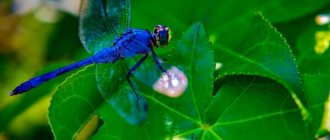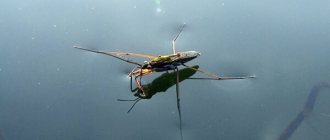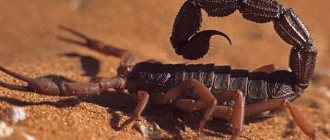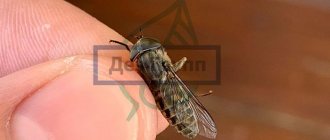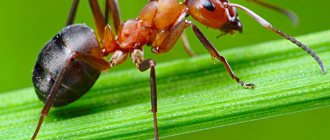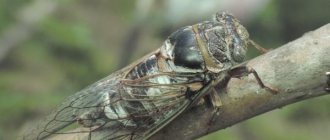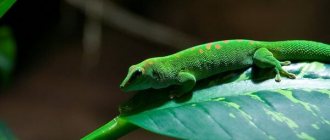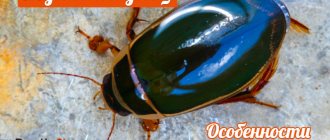Cockroaches, or cockroaches, (lat. Blattoptera, or Blattodea) are an order of insects from the superorder Cockroach.
Cockroaches reproduce quickly and adapt to any living conditions, which is why they managed to survive many cataclysms on the planet, and they appeared in ancient times. Having undergone changes in appearance and lifestyle, they managed to survive to this day. Today they live everywhere, even in cold climates, where they have learned to coexist with humans in living quarters.
Cockroaches in houses and apartments
These guests are extremely undesirable in houses and apartments, as they carry dangerous diseases. Their appearance and the growing number of individuals in the population frighten people and make them want to get rid of cockroaches in the apartment as soon as possible.
Everyone has encountered these creatures at least once in their lives, but people know very little about them. In fact, only a few species of cockroaches can cohabit with humans, and their habits, reproduction and lifestyle are very interesting, and even if the insects inevitably die, knowledge about their characteristics will allow you to choose the most effective methods of control.
How to identify domestic cockroaches?
Over hundreds of years, domestic cockroaches have adapted to certain living conditions - they die in cold and extreme heat, cannot live without water, and eat almost everything (in severe hunger they do not even refuse metal products). But exotic species of pests have a narrowly targeted diet.
Other indicators of domesticated cockroaches:
- have wings, but cannot fly;
- don't jump;
- develop incredible speed (except for black ones);
- usually settle in groups;
- hiding in secluded places;
- avoid human presence.
There is such a thing as a sea cockroach, but it has nothing in common with domestic and other cockroaches. The reason is that it belongs to the order of crustaceans.
Appearance of a sea insect:
Not only familiar-looking cockroaches may appear in our homes. Occasionally, no one is immune from this, exotic species of insects appear in houses that should not exist in our latitudes. Many of them bite humans and especially children, which is why it is so important to learn how to correctly recognize the type of arthropod.
The main synanthropic species of cockroaches
The diversity of cockroaches includes several thousand species and varieties, but only a few of them are able to live in apartment conditions, and even fewer are resistant to methods of combating them.
Adapting or escaping to another place, they continue to live next to a person, use his home and eat leftover food.
Favorable factors for cockroaches living in residential premises:
- constant air temperature about +25 degrees;
- high humidity, dampness;
- darkened places in the home: behind furniture, baseboards, in cracks; it is especially comfortable for insects to live behind the refrigerator;
- availability of food and water.
If these pests have settled in such a room, it will be very difficult to remove them. Tropical conditions in the house allow insects to actively reproduce, increasing their offspring tens and even hundreds of times annually.
Shape and body structure of a cockroach
Cockroaches are insects from the order Cockroaches. They all have a similar body structure: an oval-shaped and flat abdomen, a pair of antennae and three pairs of legs with spines and developed muscles. The eyes are located on the sides of the head and see in all directions. Vision in some species is atrophied. Individuals of synanthropic pests do not fly; in rare cases, males can make short flights or dive from a height, softening the fall by spreading their wings. Thin and mesh wings are hidden under dense elytra; in some individuals the flying apparatus is small or completely absent. Pests have powerful jaws - this feature allows them to eat any solid food.
The abdomen is segmented and can consist of 8-10 parts, each of which has its own nerve nodes, for this reason the insect is able to control the body even without a head. The outermost segment of the abdomen has outgrowths - cerci. They testify to the ancient origin of these living creatures. The structural features of the legs allow you to move freely along vertical planes and quickly change the direction of movement.
The prehensile foot of a cockroach under a microscope
Prusak cockroach - an ordinary red cockroach
Most often, red cockroaches - Prussians - live next to humans. Their population in the wild is several times smaller than at home. The Prusak is the smallest of all synanthropic insects, the total length of the insect is no more than 10-15 mm. They move very quickly, making them difficult to catch. The wings are well developed, slightly longer than the body, however, Prussians do not fly. They can be identified by their characteristic red color and dark brown stripes along the body. Another distinctive feature is their long whiskers, which help them navigate in space and find food and water. The body is covered with a chitinous shell, which protects it from light blows.
Red domestic cockroach - Prusak
In Russia, the red pest is called German - this is due to its supposed place of origin. However, in Germany it is called Russian for a similar reason. Even in Russia, such cockroaches are called Stasiks. Currently, Prussians are widespread everywhere. They choose dark and warm places to live with a sufficient amount of food and water; most often they settle in the kitchen and bathroom, near sinks and in cabinets.
A little exotic
As a rule, cockroaches cause a feeling of disgust and danger in humans. Despite this, there are cockroach families, representatives of which are kept at home as pets. Some of the ornamental insects have very interesting colors. The chess cockroach is one of the pets, and it is called so because its coloring resembles a chessboard. Leads a nocturnal lifestyle. During the daytime it hides in its shelter, and at night it actively moves around a person’s home.
Death's head cockroach
The Death's Head cockroach is no less popular among exotic lovers. He was named so because he has a very interesting pattern on his back, reminiscent of a scary mask. This insect is capable of making long flights.
Madagascar cockroach
The Madagascar cockroach is an amazing insect that can grow up to 10 cm in length. In addition, this is the only type of cockroach that can make sounds in the form of a loud hiss. At the same time, experts say that this insect breathes like this, making sounds.
Rhino cockroach
The rhinoceros cockroach is another unique representative of this numerous genus of insects. Their uniqueness lies in the fact that they weigh up to 40 grams, and besides this, they are able to live for at least 10 years.
Black cockroaches
The second most common representative of cockroaches in apartments is black. The population grows more slowly than that of redheads - this is due to individuals eating their own clutches of eggs and a later period of sexual maturity. Their body size is from 20 to 50 mm. Females are larger than males. They are distinguished by black or dark gray color with a metallic tint. They have developed wings; in males they are equal to the length of the body, in females they are half as long. Males use the aircraft for its intended purpose and can make short flights; the function of these body parts in females is to demonstrate readiness for fertilization. Representatives of black pests have an unpleasant characteristic odor. The chitinous shell is strong and it is quite difficult to crush an insect.
In the photo - a black cockroach
They prefer rooms with moderate temperatures and high humidity. Favorite habitats are sewers and basements, sometimes they live in bathrooms. They settle in living rooms only when the population reaches several hundred.
Comparison of black and red cockroaches - differences in the photo
Description and features
The black cockroach is a large crawling insect known to mankind for 350 years. Other names for this species are oriental, water, and sewer cockroaches (due to their preference for places with a humid microclimate).
American cockroach
In appearance, the American cockroach is similar to the Prussian cockroach. It has the same red or brown color on its belly and wings. They can be distinguished from other relatives by their size; they are large, up to 50 mm in length, and by dark brown spots on their bodies. The wings of males exceed the size of the abdomen, while those of females are slightly shortened. They can fly and jump. Long whiskers allow them to find food and detect air vibrations.
The American cockroach looks similar to the red Prusak
They settle mainly in sewers, heating mains and basements. They spread into apartments through ventilation shafts. They move very quickly, up to 75 cm per second.
The homeland of the American cockroach is Africa, from there it moved to North and South America, and then came to Europe. They are not often found in Russia; the more tenacious and prolific Prussians displace them from their habitats.
Other types of cockroaches
There are several more representatives of the squad who, although rarely, appear in apartments. They come from other countries and settle in a limited area, as a rule, in the southern regions of Russia, where the climate is warmer:
- Turkmen or Central Asian cockroach - has a brown color, turning into black towards the back of the body, there are no wings, the body is elongated.
- The Egyptian cockroach is painted in a rich black color, the body shape is close to round.
Separately, furniture cockroaches should be highlighted. They were discovered relatively recently, just a few decades ago. A distinctive feature of these creatures is their light, uneven color - on their abdomen all shades of brown in the form of spots or stripes.
They feed on paper, fabrics, glue, and because of this they often settle in libraries, bedrooms or offices. They mostly live in central Russia.
Furniture (Supella longipalpa)
These insects were discovered in our apartments about 50 years ago, and since then the residents have been unsuccessfully fighting them. These cockroaches can be easily identified by their transparent wings with dark stripes and a bright red hue. You won't find them in the kitchen, since their diet consists of old books, paper, waste paper, and wallpaper glue. Therefore, quite often they settle in places where there is a lot of paper, and these are libraries, archives, etc.
Reproduction of cockroaches
The reproduction speed of these creatures can be the envy of many other insects. A large number of eggs in a clutch and a short period of reaching sexual maturity, under favorable living conditions, ensure a population growth of tens and hundreds of times a year. Reproduction occurs sexually throughout the year. During their life, cockroaches go through several stages of development and repeatedly change their appearance beyond recognition.
Individuals of different sexes. Males are always smaller in size than females, but their wings are better developed and enable them to fly. The female body is denser. The outermost segment of the male's abdomen has a genital plate.
Fertilization and gestation in cockroaches
Sexual maturity occurs as soon as the insect reaches the appearance of an adult. Fertilization is preceded by peculiar mating games. The female produces pheromones, attracting males and informing them that she is ready to bear eggs. Males of some species engage in battles for the right to fertilize a female, spread their wings and demonstrate their flight capabilities. Females also use small wings to attract attention by shaking them.
During fertilization, the male transfers genetic information to the female, which can be stored in her body for a long time and used for subsequent fertilization. The development of the offspring begins in a special capsule called the ooteca. Depending on the type of insect, the ootheca may be located outside the mother’s body on her abdomen, or located inside her until the larvae form. Before hatching, the female sheds her ootheca in a protected place. The capsule must always be moist during the development of eggs and larvae; drying out leads to the death of the offspring. Some representatives of the order are viviparous, the eggs are inside the mother and fully viable larvae are born. Depending on the species, mothers can care for the offspring after hatching or, relieving the swelling, permanently break the connection with them. From the laying of the capsule to the appearance of the larvae, an average of 3–4 weeks passes.
Fertility of cockroaches
During the entire life cycle, the female can lay larvae 4–6 times. Each ootheca of the Prussian contains about 30 eggs, black up to 18. One female is capable of bringing from 20 to 200 larvae in her entire life.
The total offspring of one female individual during the year can reach values of several thousand. The greatest fertility is inherent in the Prussian - up to 300 thousand individuals per year. The black one lays about half as many eggs. The American one reproduces much more slowly - only 800 larvae per year.
Development of cockroaches - from egg to adult
Over the entire period of life, these living creatures go through three phases of transformation. The process of these changes is called metamorphosis.
- Egg - formed in edema, the period lasts 3-4 weeks, a larva develops in each egg.
- Larva (nymph) – the period from birth to the acquisition of the form of an adult insect. Immediately after hatching, the larva is white, but very quickly turns brown and its shell hardens. At this stage, there are no wings, but the insect already looks like its parents. Nymphs molt up to 6 times, with each subsequent time they acquire more and more characteristics of an adult. The length of the period depends on the species and varies from several weeks to two years.
- An adult (imago) is the stage of sexual maturity and readiness for reproduction. Further, the pests do not change their appearance until the end of their life cycle.
What is the purpose of these insects
Why are cockroaches needed? These insects have existed on Earth for more than one million years, therefore, the assumption that the only purpose of these insects is to parasitize a person’s home is fundamentally wrong.
Cockroaches, belonging to almost all species, destroy smaller parasitic insects, for example, bedbugs and various larvae.
Thus, they may well bring not only harm, but also benefit.
How long do cockroaches live?
There is a lot of controversy about the lifespan of these creatures - this is due to the fact that it is different for each species. Red Prussians live about a year, black ones - a maximum of 2 years, American Prussians live a little over a year as adults.
The duration of the stages of metamorphosis can vary not only from species to species, but also depending on conditions. Lowering the temperature and limiting nutrition can delay the development of eggs and nymphs indefinitely.
The lack of food can significantly shorten the lifespan of adult creatures, but even under these conditions, Prussians exist for about another month, after which they begin to eat their relatives or bite people, pinching off pieces of skin. Blacks can go without food for up to two months, but they never attack their own kind, dooming the entire population to death. Long-term survival without food is due to a very slow metabolism. The lack of water is more destructive for cockroaches; without it, pests can live no more than a week. A drop in temperature below zero shortens the life of insects to several hours.
Insect lifespan
So, how many years or days do cockroaches live? The lifespan of most species is no more than a year. Among this large group, the longest-livers are the large American ones - given favorable conditions, their life expectancy can be up to three years.
How long do cockroaches live?
Probably, almost everyone who has encountered these unpleasant parasites is interested in the question of how long do domestic cockroaches live. If there is enough food, water, and optimal temperature conditions, life expectancy can be up to one year.
Moreover, only eight out of twelve months the insect is in the adult stage.
Video
Cockroaches live even without a head
How long can domestic cockroaches live without food and water?
How long do cockroaches live without food, water, or air? Since these representatives of the insect world are cold-blooded, they can easily live without food for at least two months, and often much longer. The main thing for them is the availability of water.
Without sufficient moisture, parasites can survive for no more than a week.
As for air, according to studies, insects can hold their breath for half an hour or more.
However, a longer absence of air is disastrous for them.
Lifestyle and behavior of cockroaches
All cockroaches are nocturnal, and only with the cover of darkness do they leave their shelters in search of food. If pests appear during the day, it means that there are a large number of them and the population is experiencing an acute lack of food or moisture. During daylight hours, these creatures hide in dark places.
Cockroaches live in large groups, but in their population there is no distribution of roles like termites. However, scientists have experimentally proven that they make joint decisions, for example, about where to migrate. When the population’s place of residence becomes crowded, they divide into two groups and go in search of a new home. According to another study, the majority obeys the decisions of individuals.
In case of danger, which these creatures can notice with the help of vision and antennae, insects prefer to flee. During the day, pests are most vulnerable, so at this time of day they stay in cracks and corners.
Where do cockroaches live and hide?
The love of cockroaches for warmth, darkness and dampness has determined their main places of residence. In addition to kitchens and bathrooms in residential apartments, they are attracted to warehouses, pantries, shops, public catering places, hospital wards, basements, ventilation shafts, through which they most often enter apartments and garbage chutes.
In an apartment, you can find hiding representatives of the population behind baseboards, in closets, under wallpaper, under parquet, linoleum, near trash cans, in cracks next to the water supply, under the sink - in these places they feel most comfortable. Only growing numbers and lack of food force them to explore new territories.
For example, the following photo shows cockroaches on the window of an apartment littered with a bunch of garbage and unnecessary things. The owner brought everything from the trash heap into the house, so they moved to all the residents of this house, expanding their borders.
To effectively fight cockroaches, you need to understand where they come from and start at the source. If they are running away from their neighbors, you will have to persuade them to treat the premises and maybe even give them a bottle of Dichlorvos, while simultaneously treating your home. If cockroaches have settled in the basement, entrance or garbage chute, you must immediately submit a request to the SES to treat the entire entrance and basement.
Prevention measures
To prevent the appearance and reproduction of domestic cockroaches, the following rules must be observed:
- maintain cleanliness;
- block access to the trash can;
- Wipe sinks, countertops and work areas in the kitchen dry;
- turn on the water taps tightly;
- cover the exhaust ventilation grilles with fine mesh or medical gauze;
- store food in closed containers and containers;
- carry out preventive treatment of places most visited by cockroaches.
Getting rid of insects in apartment buildings, especially if there is an equipped garbage chute, is quite difficult.
Note! The most effective means of exterminating domestic cockroaches is the use of modern chemicals made on the basis of highly toxic substances that are destructive to insects and their offspring. The fight should be carried out jointly with neighbors, both for the purpose of prevention and to completely clean the premises from parasitic insects.
What do cockroaches eat?
Cockroaches are omnivores; anything can serve as food for them. They are especially attracted to:
- fresh and spoiled food, even table crumbs;
- sweets;
- flour products;
- paper, including wallpaper, books;
- pieces of furniture;
- cloth;
- soap.
An indispensable condition for cockroaches to live is water. If she is not there, they will quickly leave the room. That is why, in order to remove cockroaches from the house, you must first cut off their access to water and food. Do not leave crumbs on the table or dirty dishes in the sink. At night, the sink and dishes should be wiped dry, and all food should be securely packaged and hidden in places inaccessible to insects.
In some cases, when there is an acute shortage of food, aggressive individuals can attack a person, feeding on particles of his skin and leaving harmful microbes for last (this happens extremely rarely). The Prussians are characterized by cannibalism.
How to get rid
People who first encounter insects in their homes always wonder: “ Where do black cockroaches come from? » There may be several options:
- crawled from neighbors or from the basement, especially when chemical insect control is going on there;
- brought a sexually mature fertilized female with things from friends, relatives or from a trip;
- left over from past unscrupulous tenants;
- they brought an ootheca with eggs from the entrance on shoes.
How to get rid of black cockroaches - five proven methods:
- Call chemical pest control specialists to treat all areas where black cockroaches may be present. This method is the fastest and most effective, but requires the temporary relocation of all family members to other housing, including pets.
- Strongly cool the room for several days (this method is permissible in winter at sub-zero temperatures and will only get rid of adult insects, but will not protect against subsequent hatching of young animals from deposited cocoons). Accordingly, the supply of cold air should be long-lasting, which will require a change of housing for all household members and house plants.
- Purchase a suitable insecticide for black cockroaches (when purchasing, you should pay attention to the instructions, contraindications and study the admissibility of use in a home with pets and small children).
Types of industrial products:
- Trap houses (for large insects) contain an intestinal poison bait that kills adult cockroaches and nymphs.
- Gels are highly effective products with a semi-liquid consistency and are attractive to all types of cockroaches because they contain water and food at the same time (mixed with toxic ingredients).
- Sprays are a convenient means for treating accumulations of insects in corners and narrow crevices; they instantly kill several dozen individuals.
- Chalks and powders (dusts) of contact action (the poison is carried on the legs of cockroaches and destroys all stages of development. Efficiency depends on the concentration of active components, most often powders give a positive result when the number of cockroaches is small.
- Take advantage of modern technologies:
- The ultrasonic repeller works on the principle of influencing the senses of black cockroaches (light and high-frequency waves), stimulating the nervous system, which forces them to leave the given home.
- An electronic trap destroys insects that come to the bait with a discharge of current. It is necessary to install several of them, and also limit the access of pets (especially small rodents).
- Use traditional methods of struggle:
- Balls with boric acid (the most effective method, requiring preparation). This bait is made from the favorite products of cockroaches with an admixture of pharmaceutical boric acid. A well-known recipe for balls: boil 1 chicken egg and potatoes, mix them with flour and vegetable oil, adding boric acid (all proportions are taken by eye). From the resulting mass, form small balls the size of a hazelnut kernel and place them in places where unwanted guests often appear. Cockroaches are great at eating treats without noticing the medicinal component in it, and in the end it kills them. This product is completely safe for pets.
- Laying out fresh bay leaves, the aroma of which insects do not like.
- Making traps from paper tape. Small houses stick the cockroaches and they cannot get out, dying of hunger.
